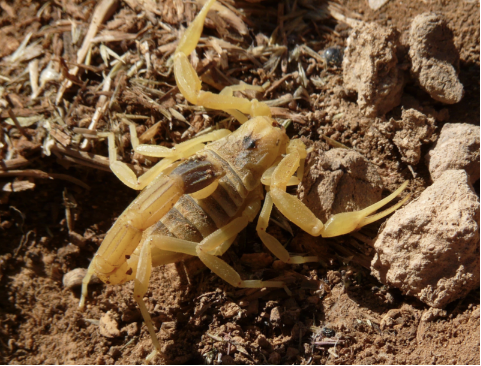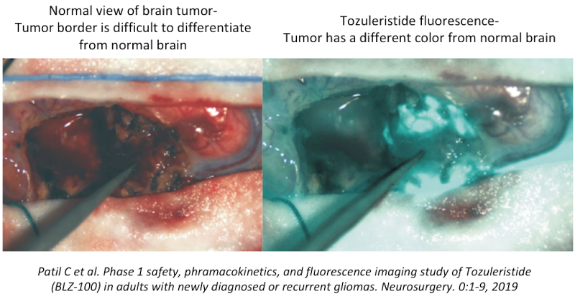While many have seen scorpions in movies and the harmful effects they have on humans, people are unaware of the fact that Deathstalker scorpions proteins can help treat brain cancer. Read the article below to find out more about this new discovery called Tozuleristide.

Deathstalker Scorpion
Turns out that only 25 of the 1,500 known scorpion species are fatal to humans with their neurotoxins. Most just produce a bee-sting like reaction, but many people still don’t want to be anywhere near any scorpion.
A new protein found in the Deathstalker scorpion, called Tozuleristide, has been shown to bind to certain brain cancer cells but not healthy brain cells. This Revolution may redefine the relationship brain cancer patients want with scorpions.
In brain tumor surgery, it has been shown that larger surgical resection provides a better chance for long-term survival. Aggressive resection, though, must avoid damage to normal brain, and it often can be difficult to distinguish tumor cells from normal brain tissue. The edges can blend together.
To help remove brain tumors many surgeons have sophisticated operative tools, like a GPS system, to help localize the edges of the tumor during the resection. The limitation of this tool is that the GPS system is based on the tumor-brain relationship only at the beginning of the surgery. The GPS uses a preoperative MRI scan as the roadmap. Once the tumor starts being removed, the brain shifts and so the original GPS map is potentially less useful. It is analogous to using mobile-device map in a subdivision actively being built… the unincorporated roads may be off a bit.
Tumor fluorescence surgery is an emerging technology to avoid this problem. Certain chemicals can attach to the tumor and make the tumor appear a different color than normal brain. This allows the surgeon to visualize which cells are tumor cells and which are not. Most existing fluorescence chemicals, 5-ALA or ICG, tend to only affix to malignant cancers, and therefore are less useful in benign tumors. The amount of color-change with these existing options is sometimes only subtle.
Tozuleristide has been shown to bind to both high and low-grade glial tumors, including glioblastoma (GBM), astrocytomas, oligodendrogliomas, and ependymomas. The color change appears to be dramatic. Preliminary studies are showing promising results. Tozuleristide may become a great tool to achieve larger resection in brain tumor surgery.






